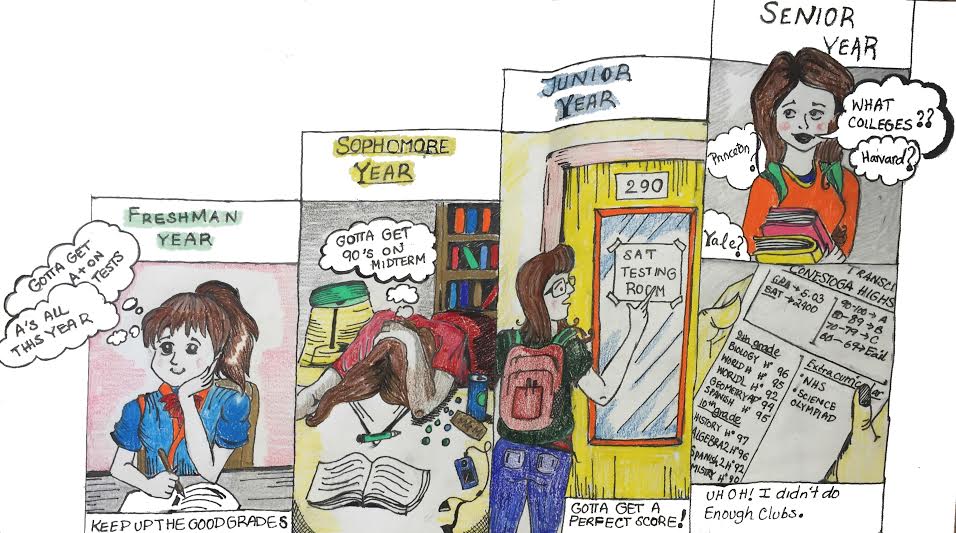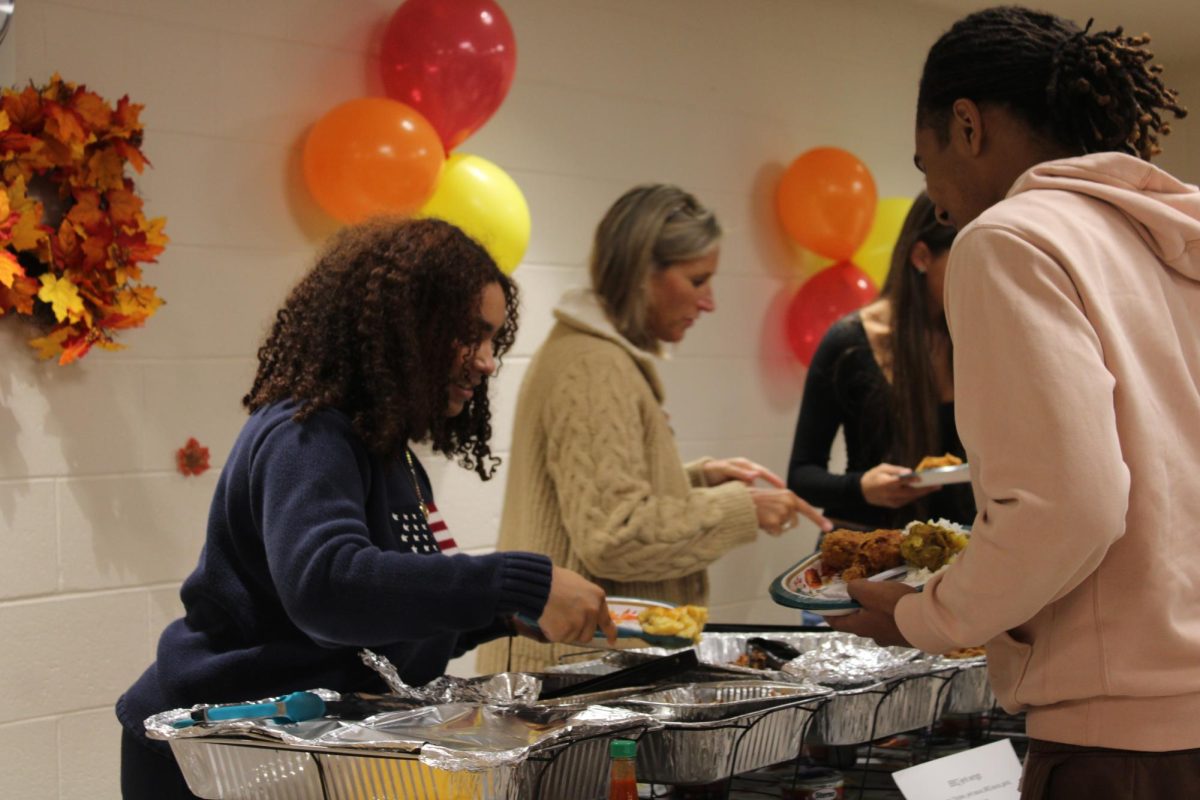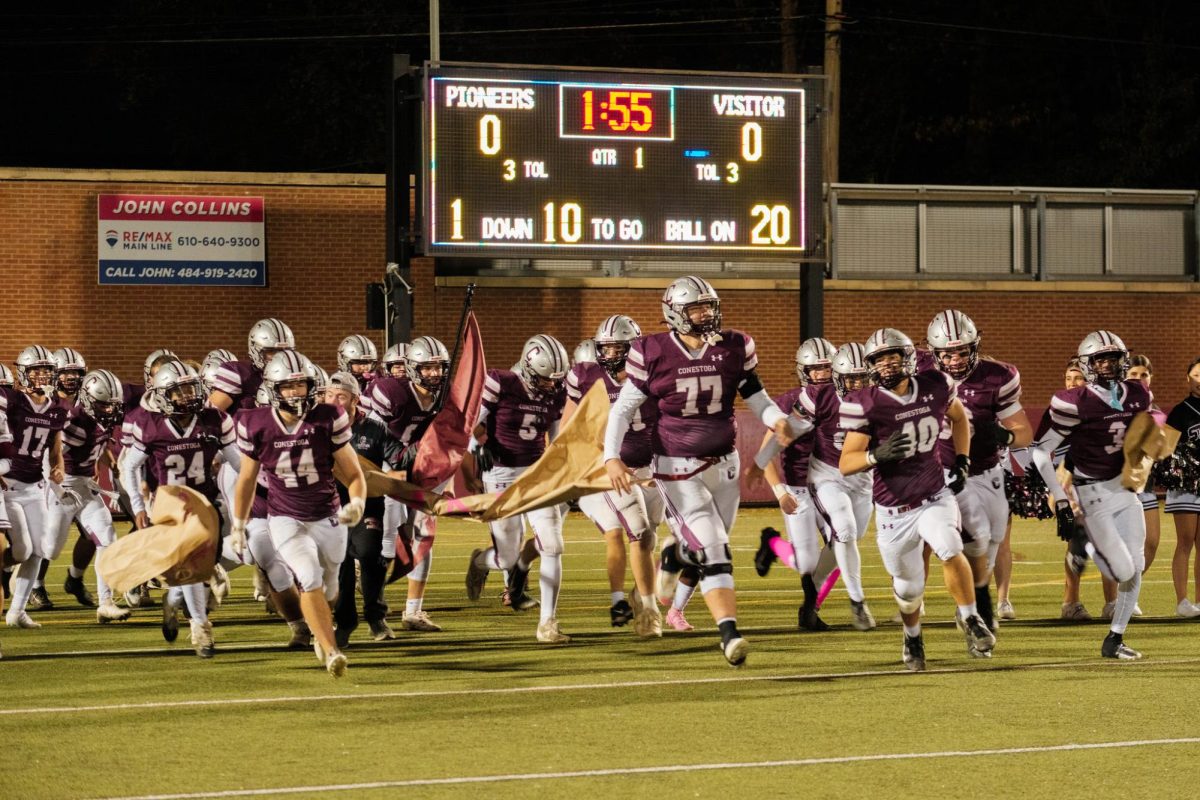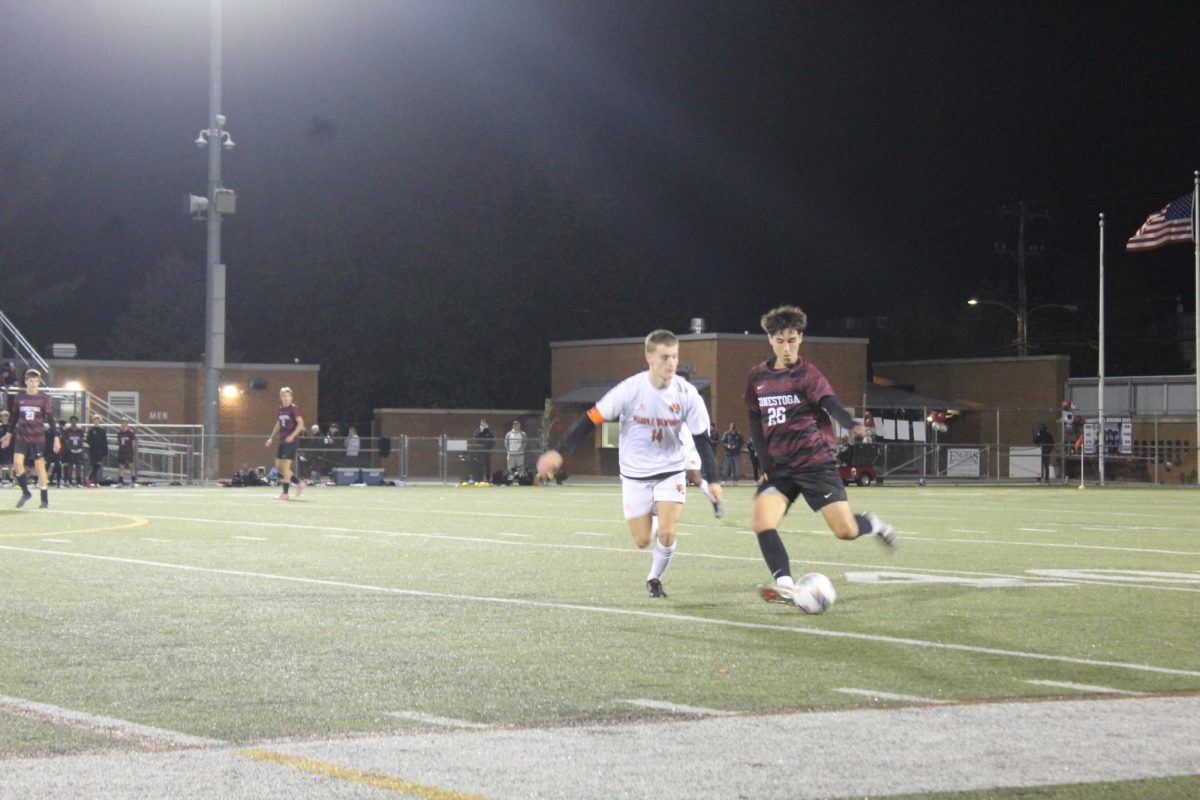By Michael Zhang, Head Designer
Cartoon by Pallavi Aakarapu
January. A time of firsts. The first time this year’s freshmen will sit through midterms, while another set of 500 students considers the first time they might not have to deal with these cumulative assessments. It’s the first month of the calendar year, the end of the first semester. And hidden in the redundancy of all these firsts comes the opportunity to try something new.
Unfortunately, some things will always be easier said than done.
We go to school in a public district recently ranked the best in America1, and it’d only be natural for a visitor to walk in with a preconception that the hallway air smells of a strive to succeed. Luckily, ambitions at Conestoga are mixed in with friendly faces and collaborative study environments—the possibly of cutthroat natures at least not readily apparent in a healthy secondary school community. Despite this however, it’s impossible to ignore the fact that as students, we face perpetual pressures to do well. One increasingly prominent definition on how to do so involves shedding those curves of well-roundedness, and becoming well, lopsided and angular.
Success means different things to different people; one of the biggest worries is applying a one-size-fits-all approach to academic achievement. But a rather large motif of secondary school education seems to be the idea that accomplishments rely on picking up passions and specializing. Whether it be performing in the musical as a theater kid, going to states for a team sport, or winning academic competition after competition, it seems like the biggest advice students receive now is to drop everything else and live a distinctly defined this-not-that attitude of extracurriculars..
Now, there are certainly merits in being angular. The experiences possible through the focused pursuit of one or two extracurriculars should naturally prove more fulfilling than those which have to share efforts spread thin over multiple interests. And considering the ever-looming high school incentive of pursuing higher learning, colleges across the country are now calling for well-rounded classes—not individuals—full of young experts excelling in various activities and interests that can contribute to the overall campus community. But there can be dangers in this way of thinking. Primarily, while students should be free to explore their passions as much as possible, they should be careful not to shut themselves off from the rest of the world.
[media-credit id=1 align=”alignleft” width=”956″] [/media-credit]
[/media-credit]
If we aren’t, attitudes that cultivate picking out passions and devoting all of our efforts solely to the selected areas of interest could inspire feelings of apathy to everything else. The end product: mindsets that see trying out new things as a waste of time. While the intentions of maximizing fulfillment through extracurricular tunnel vision are certainly noble, it’s important to be able to relax, slow down, and consider other possibilities. By finding appreciation for other subjects and activities, students are able to consider their pursuits in a more realistic context fitting in with the rest of the world. Often, it’s an interdisciplinary perspective looking at things in new lights that leads to greater fulfillment in both the primary and secondary interests. And at the bottom line students should avoid labelling themselves in ways that would make mastery of one subject justify ignorance of everything else.
So what can we do to avoid living in a lonely world of isolated expertise? One option is to develop our interests in the shape of a “T”, not an “I”. Both illustrate how one could be really passionate about a single interest, but the T-minded person also harbors an appreciation outside of that area—hence the segments that stick out. Our educational culture should promote an openness to the unfamiliar, particularly through discovering ways that connect what we don’t know with what we know. Teachers could do their part in class by tying in different segues from other areas outside the lesson plan. On the surface they may not correlate with the subject at hand, but these interdisciplinary connections could very well instill an appreciation for learning in a greater context outside the classroom. As students, we should also take initiative, thinking about how the many experiences in daily life could connect or apply to our primary interests.
Growth often lies in stepping out of one’s comfort zone, but in this case doing so doesn’t actually have to be that uncomfortable. If we’re to believe that social science has any say in how the world operates, think about what Professor Ron Burt of the University of Chicago Booth School of Business has to say2: that maintaining large, open networks of people rather than small, closed ones appears to be the greatest predictor of career success. It’s not brains or grit, but an openness and even a desire to being exposed to different people, fields and ideas. So consider January as a time of firsts, and don’t be afraid to keep those curves and try something different.
1 2016 Best School Districts – Niche (https://k12.niche.com/rankings/public-school-districts/best-overall/)
2 These slides can get a little heavy, but if you bear with me Slide #7 is what we’re after.
Michael Zhang can be reached at [email protected].




















































































